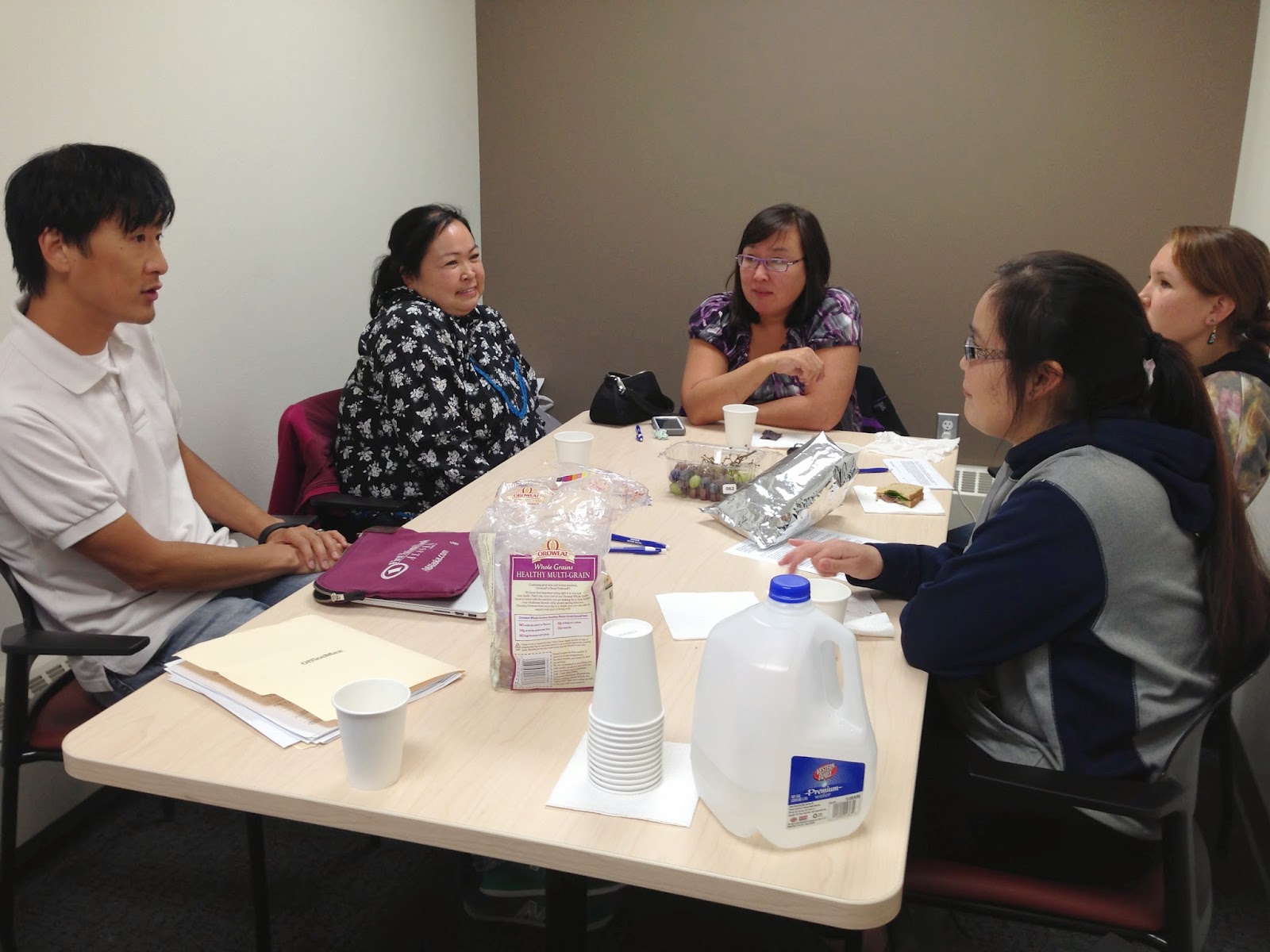01/19/2015, Chefornak, Alaska: I'm heading to Chefornak, Alaska - a small Yukon Kuskokwim community (population 418 according to the 2010 U.S. Census) - for my first winter clinic trip to a village. I was in Chefornak in June 2014. This time I had to pack winter gear in preparation for the cold weather, including my -40 degree coat. I left the Bunny Boots at home. I also packed 2 weeks of food, clothing, and entertainment (i.e., laptop and external hard drive full of data to process and analyze, one book, a couple of dental journals, dozens of hours of archived Dan Savage podcasts). Amazingly, I only had to check one bag at the airport.
On the flight from Seattle to Anchorage, I met a cute service dog named Teddy. She was sitting on the floor next to me. By the time we hit 10,000 feet, Teddy's head was resting on my right foot. An hour later, she had taken up most of my leg room. She was a very friendly, well-behaved dog.
The rest of the flight to Anchorage and the flight to Bethel was uneventful. Woke up early the next morning and arrived at the Era Terminal in Bethel, where I had at least 8 cups of complimentary Folgers coffee with instant powdered cream. The airport was pretty quiet when I first arrived, but it got pretty busy close to boarding time. This is one of the only places I know of in Bethel (besides the Bethel library) that has free wifi. This was the last time I'd be able to check email on my iPhone, access episodes of Glee and Downton Abbey through Amazon Prime, and check Facebook status updates.
It's January, which means it stays dark until pretty late in the morning and starts to get dark early in the evening. The winter solstice has passed and the length of daylight is increasing each day, but it's hard to tell. I complain a lot about how dark it is in Seattle during the winter. But we have it pretty good in comparison.
9:09 AM (liftoff)
9:21AM (midflight)
9:46AM (landing)
It takes about 35 minutes to complete the direct flight from Bethel to Chefornak. It was still pretty dark when we landed. It wasn't as cold as I thought it would be, which was a good thing given that I had not packed snow pants. The ride to the clinic was chilly but unseasonable warm (20s). The left side of my face got pretty cold. Thankfully, I didn't develop Bell's Palsy.
During the first few days in Chefornak, we spent our time at the Head Start Center and K-12 Chefornak School (Amaqigciq/Caputnguaq) screening children for dental disease. At the Head Start Center, it was nice to see a toothbrushing operation set up near the sink. Most importantly, the kids were brushing with fluoridated toothpaste.
It was nice to see the Yupik word for mouth, teeth, or smile near the toothbrushing sink (right up there with hair and ear).
It's been a great trip so far. We were able to meet with the Chefornak Village Council earlier in the week to share findings from our sugar sweetened beverage study. Our hope is to include Chefornak as a partner community for our next NIH grant. Over the week, the temperature has dropped and there's been a bit of snowfall. Today it's -7. The sunset is absolutely stunning. Just a few more days and I'll be heading back to the land of the 12th Man.
5:07PM (sunset)



















































